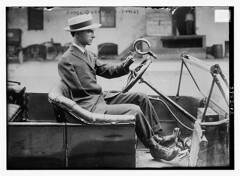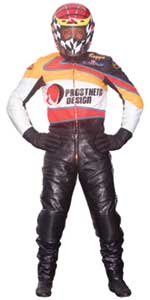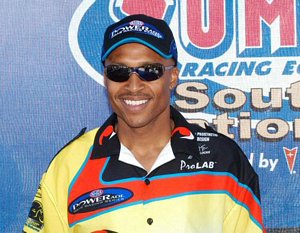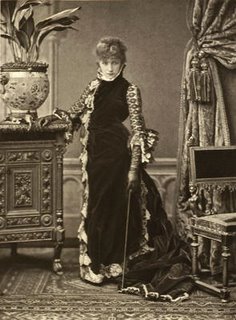Friday, July 20, 2012
Reconstructing Lives (Edinburgh, until February 2013)
National War Museum
Fri 9 March 2012 - February 2013
Free with admission to Edinburgh Castle
From the official description:
"Reconstructing Lives takes a fascinating and moving look at the experiences of those who have lost limbs in war, whether military or civilian, and the technology which helps rebuild their lives....On display you'll find prosthetics, ranging from a 16th century iron hand to a modern i-limb hand developed by Touch Bionics."
Here's a report with photos, by someone who visited the exhibit. And here are blog entries about the exhibit, by museum staffers.
Wednesday, March 31, 2010
Flickr: Judge Quentin D. Corley (1884-1980)

Judge Quentin D. Corley (LOC)
Originally uploaded by The Library of Congress
Another disability history image thanks to the Flickr Commons project. This one is from the Library of Congress's set from the George Grantham Bain Collection, news photos from 1910-1915. Here we see Judge Quentin D. Corley (as the title suggests), driving a very early model car with steering wheel adaptations for his prosthetic left hand; the right sleeve of his jacket appears to be empty. Corley looks to be a young man wearing a white summer hat.
Quentin Durward Corley was born in 1884 in Mexia, Texas. As a young clerk in 1905, he lost both hands, his right arm, and his right shoulder in a railroad accident near Utica, New York. Corley went into a law career, passing the bar in Dallas County in 1907; in 1908 he became a justice of the peace, and in 1912 he was elected a county judge--the youngest county judge in Texas at the time. He also developed and patented the prosthetic hand he's shown using here--which allowed him to drive, type, button, cut, light a match, and write with a pen better than other available options. He toured the state of Texas alone by car to publicize his campaign for a girls' training school in the state. Corley died in 1980, age 96.
The Dallas Observer's blog wrote up this photo last fall. But they refer to a much earlier newspaper's treatment of the story: in 1918, under the title "Handicaps of Fate Defied by Cripples," the New York Times reported that Corley spoke a meeting at the then-new Red Cross Institute for Crippled and Disabled Men in New York City that year, intended to encourage returning World War I veterans who may have similar physical impairments. Other speakers at the meeting were Michael J. Dowling, a bank president from Olivia, Minnesota (and a triple amputee from severe frostbite in his youth); and Frederick W. Keough, a representative of the National Association of Manufacturers, who discussed the issues of rehabilitation and employment for disabled veterans.
Thursday, April 30, 2009
New Image Database from the NLM
 [Image description: Stylized portrait of a man, standing at a podium, wearing a powdered wig, ruffled white shirt, and dark glasses.]
[Image description: Stylized portrait of a man, standing at a podium, wearing a powdered wig, ruffled white shirt, and dark glasses.]The National Library of Medicine has significantly changed their website titled Images from the History of Medicine-- and the over 60,000 images (portraits, photographs, drawings, caricatures, posters, etc.) include a lot of images of interest to historians of disability. In a quick riffle, I found 1838 drawings of "idiots" in Paris, 1791 diagrams for slings and prosthetic devices, and of ear trumpets, and the lovely 1796 portrait at left, of Dr. Henry Moyes (c1750-1807), a noted Scottish chemistry lecturer who was blind after surviving smallpox as a small child. There are many more recent (1970s and later) photographs and posters and pamphlet covers and such as well.
Monday, January 14, 2008
January 14: Harold Russell (1914-2002)

Boy, you ought to see me open a bottle of beer.Born on this date in 1914 in Nova Scotia, Harold Russell, pictured at right with the two Oscars he won in 1947 for a single role, in Best Years of Our Lives. Though he was Canadian-born and raised, he was living in the US and working as a meatcutter when Pearl Harbor was attacked in 1941; he joined the Army the very next day. While making a training film in 1944, a defective fuse blew up and both hands had to be amputated. He used hooks thereafter, with a grace that, by all accounts, dispelled dubious onlookers' concerns.
--"Homer Parrish," as played by Harold Russell
Russell appeared in an Army documentary about rehabilitation, Diary of a Sergeant, while he was a student at Boston University. He was spotted by director William Wyler, and cast to play a disabled veteran in The Best Years of Our Lives. He won two Oscars for the role: one a "special" Oscar for "bringing hope and courage to his fellow veterans," and one for Best Supporting Actor, as voted by the Academy. After the hubbub surrounding his Oscar wins, Russell returned to Boston University and finished a degree in business.
Russell published an autobiography, Victory in my Hands (1949). For many years he was National Commander of the American Veterans (AMVETS), and chaired the President's Commission on the Employment of the Handicapped.
Wednesday, December 19, 2007
December 19: Richard Leakey (b. 1944)
 I had two legs in the grave, but I wasn't dead.
I had two legs in the grave, but I wasn't dead.Kenya-based paleoanthropologist, museum administrator, Kenyan government official, and environmentalist Richard Erskine Frere Leakey turns 63 today. In his twenties, he was diagnosed with terminal kidney disease, and told he had only a decade to live. (He had a kidney transplant in his thirties, with significant immune system complications afterwards, but he's outlived that prediction by thirty years and counting....) As the first chairman of the Kenyan Wildlife Service, he took on the problems of poaching and the ivory trade.
In 1993, he was injured in a plane crash that may have been caused by sabotage (widely suspected, never proven). Since then, he's used two below-the-knee prosthetics, or in some situations a wheelchair. During his term in the Kenyan parliament (1997-1999), he introduced legislation to protect the rights of disabled people in Kenya. He continues his work, as a visiting fellow at SUNY-Stony Brook, and as chairman of Wildlife Direct, which funds conservationist work in Africa and encourages park rangers to publicize their work through blogs and other "on the ground" reporting. He's been a trustee of the National Fund for the Disabled in Kenya (1980-1995) and the National Kidney Foundation of Kenya (1981-1990).
Leakey describes the plane crash and its aftermath, with detailed descriptions of learning how to use a wheelchair and prosthetic legs, returning to his work and activism, encountering social and political disadvantages as a disabled person, etc., in his memoir Wildlife Wars: My Fight to Save Africa's Natural Treasures (with Virginia Morell; St. Martins 2002). Here's Leakey's own blog.
Saturday, December 08, 2007
National Library of Medicine's historical image collection online
 A message on H-Sci-Med-Tech pointed me to the National Library of Medicine's History of Medicine image collection online--wow. It's an amazing collection of images from all times and places. Many recent public service posters and program covers, but also much older stuff, like the lithograph I've included at left, titled "Souvenirs of War": it's captioned in French, and from the uniforms I'm assuming early 19c. The caption is in French, and repeats a refrain, "ah, quel plaisir d'etre un soldat!"
A message on H-Sci-Med-Tech pointed me to the National Library of Medicine's History of Medicine image collection online--wow. It's an amazing collection of images from all times and places. Many recent public service posters and program covers, but also much older stuff, like the lithograph I've included at left, titled "Souvenirs of War": it's captioned in French, and from the uniforms I'm assuming early 19c. The caption is in French, and repeats a refrain, "ah, quel plaisir d'etre un soldat!"[Further image description: All four men visible are using different orthopedic supports--one man in the distance is walking with crutches; another closer to the viewer is also using two crutches, but has his leg hitched up; a third man, in the center of the frame, is using two simple "peg-leg" style lower-limb prosthetics, and a thin cane; the fourth man, on the right, is in a box-like chair with small wooden wheels; he may also have his head/neck wrapped (it's hard to tell).]
Wednesday, September 26, 2007
MacArthur Fellows 2007: Disability researchers in the mix
 Another, Jonathan Shay (b. 1941, portrait at left), is a Boston-based psychiatrist and classicist who takes humanistic approaches to psychological injury in Vietnam (and now Gulf, Afghanistan, and Iraq) War veterans. His book titles may give a good flavor of his work: Achilles in Vietnam: Combat Trauma and the Undoing of Character (1994) and Odysseus in America: Combat Trauma and the Trials of Homecoming (2002). Shay is himself a stroke survivor who has experienced post-stroke paralysis.
Another, Jonathan Shay (b. 1941, portrait at left), is a Boston-based psychiatrist and classicist who takes humanistic approaches to psychological injury in Vietnam (and now Gulf, Afghanistan, and Iraq) War veterans. His book titles may give a good flavor of his work: Achilles in Vietnam: Combat Trauma and the Undoing of Character (1994) and Odysseus in America: Combat Trauma and the Trials of Homecoming (2002). Shay is himself a stroke survivor who has experienced post-stroke paralysis.
Saturday, September 22, 2007
Smuggled Iguanas + Prosthetic Leg = News?
It's still a federal crime, folks.
(Hat tip to Abe Munder, the Wheeled Wonder, for some of those news links.)
Monday, July 30, 2007
Kenny Fries on Oscar Pistorius
 As I've noted here before, NHRA drag racing has a very different history with amputee racers and customized prosthetics. Maybe it's because of the sport's literally explosive nature, or because it's already a technology-centered competition. The legendary Don Garlits lost part of his foot in a 1970 track explosion, and had a permanent limp thereafter; he was still racing decades later. Far from putting Garlits out of the running, the incident spurred him to pioneer major safety changes in dragster design. Reggie Showers (pictured at right, holding a prosthetic leg), a drag-bike racer who was a double below-the-knee amputee after an electrocution accident in his teens, wore specialized prosthetics on race day that made him five inches shorter, in an event where a more compact profile is generally considered an advantage. That advantage was never ruled "unfair," and Showers competed for several seasons without controversy.
As I've noted here before, NHRA drag racing has a very different history with amputee racers and customized prosthetics. Maybe it's because of the sport's literally explosive nature, or because it's already a technology-centered competition. The legendary Don Garlits lost part of his foot in a 1970 track explosion, and had a permanent limp thereafter; he was still racing decades later. Far from putting Garlits out of the running, the incident spurred him to pioneer major safety changes in dragster design. Reggie Showers (pictured at right, holding a prosthetic leg), a drag-bike racer who was a double below-the-knee amputee after an electrocution accident in his teens, wore specialized prosthetics on race day that made him five inches shorter, in an event where a more compact profile is generally considered an advantage. That advantage was never ruled "unfair," and Showers competed for several seasons without controversy.(A smaller body is also an advantage in Indy 500 racing, and women Indy drivers have been accused of having an unfair advantage because they're smaller, on average
 --a blatantly sexist charge that has not resulted in women (or men of short stature, for that matter) being banned from Indy cockpits.)
--a blatantly sexist charge that has not resulted in women (or men of short stature, for that matter) being banned from Indy cockpits.)*In comments, Sara says the whole Cheetah functions as a spring. So corrected! I wonder if the rules mean that kind of spring action, or the actual boing-boing curly springs I was picturing. Oh, yes, I really was picturing Wile E. Coyote with his spring shoes, bouncing across canyons (see left)--which, as far as I know, nobody's tried to use in track competitions anyway. Good thing the legs are called "Cheetahs" instead of "Coyotes," I guess...
Saturday, July 28, 2007
The Cairo Toe
 I've always liked the sixteenth-century Ambroise Pare illustration of a prosthetic hand--never actually crafted, but the design is lovely in its intricacy. (A few years back, I got a little notebook featuring the image at a conference, from a table sponsored by the National Library of Medicine.) But it's far from the earliest known evidence of prosthetic ingenuity.
I've always liked the sixteenth-century Ambroise Pare illustration of a prosthetic hand--never actually crafted, but the design is lovely in its intricacy. (A few years back, I got a little notebook featuring the image at a conference, from a table sponsored by the National Library of Medicine.) But it's far from the earliest known evidence of prosthetic ingenuity.Natalie Bennett posted this, from an article in the Telegraph:
Researchers intend to make a replica of the “Cairo toe”, a bending leather and wood attachment that they believe could be the world’s earliest practical prosthetic. They are seeking volunteers, who are missing big toes on their right feet, to test their theory that the fake toe helped its original user to walk.(So it has to be the right foot? Really? They can't make a mirror-image replica?)
By the way, the toe's original user was a woman in her fifties or sixties--her mummy was dated to between 1069BC and 664BC--so I'm guessing it wasn't a prosthetic to address a battle injury, as many historical prosthetics have been. And maybe the articulated "fake toe" wasn't made primarily to help her walk, but was instead a cosmetic appliance, or helped her do work involving a treadle (if that's not an anachronism) or had some other purpose for her--why assume walking would be the only real use for a prosthesis? The carefully carved toenail wouldn't be there if the device was only for balance and locomotion.
The previous record holder for earliest known prosthesis was the "Capua leg," a copper-and-wood device from about 300 BC. I was in Capua a few weeks ago--but the leg wasn't, it was destroyed in bombing during World War II, while it resided at the Royal College of Surgeons in London. And Herodotus mentions a Persian soldier having a wooden foot after a rather grisly escape in the 5th century BC.
But wait! The "Greville Chester Great Toe" might be even older than the Cairo Toe... oh, the suspense!
[Image above: The Cairo Toe, a dark wooden prosthesis that looks a bit like a big toe and the ball joint behind it, attached to a skeletal foot, with a woven strap nearby. The photo is credited to the University of Manchester, and appeared in the Telegraph article online.]
Monday, May 21, 2007
While Strolling through the Park One Day...

Okay, I can't pretend it was a surprise, so the song ends there. But I did take this photo today in the park--at Aidan's Place, an accessible playground near UCLA. It's Heather Mills showing a prosthetic leg to a little girl named Sammy, who recently had an amputation, while Sammy's older sister looks on from a swing. Today is Sammy's eighth birthday. (What you can't see is the film crew from Entertainment Tonight, and the very long white limo that was waiting a few feet away.) We were there because Shane's Inspiration, an organization that builds accessible playgrounds here in Southern California, asked some of the park regulars to be there during Mills' visit, even though it was a Monday morning--going to school or playing in the park? Not a difficult call, really. So we knew there'd be some hoopla, and cake, but it was such an "only in LA" bizarro family outing, we couldn't resist. (I think the story will be on ET Tuesday night--I doubt we're actually in any of the footage, but if we are, I'm the mom in the black hat.)
Sunday, November 05, 2006
Bikes, Motorbikes, and Reggie Showers
 Sara at Moving Right Along gave me a great opening for my annual post combining my interests in disability studies and NHRA drag racing. (My 2005 post on the subject is here.) She writes:
Sara at Moving Right Along gave me a great opening for my annual post combining my interests in disability studies and NHRA drag racing. (My 2005 post on the subject is here.) She writes:If you are an amputee, barring other complications, you can probably ride a bike. You can ride if you are missing an arm -- or two! You can ride if you are missing a leg -- or two!Which gives me an opening to write about double-amputee motorcycle drag racer (and one-time Temple University student-to-be) Reggie Showers (b. 1964; shown at left). Showers, a "bilateral transtibial amputee" since he was electrocuted in an accident at the age of 14, was a Pro Stock Motorcycle racer, piloting a custom bike down the quarter-mile track at more than 180 mph. Showers began racing in 1989 on the International Drag Bike Association circuit, and won the IDBA championship in 1990. At one point, he held fourteen world records in drag biking. He toured with his prosthetics specialist, Tracy Slemker of Prosthetic Designs, doing educational outreach at racetracks during NHRA events. (His racing legs were specially designed for maximum control and minimum weight--so on race day, he was five inches shorter than he was in his everyday legs.) Showers isn't racing anymore--he finished his pro career after the 2003 season.
 Said Showers of his hi-tech legs:
Said Showers of his hi-tech legs: I remember back in the late'70's when the accident happened, being very ashamed of being an amputee or "handicapped" person. The word "handicapped" did not sit well with me. Now, in the year 2000, being so-called "disabled" is pretty trendy, pretty chic - I like to show off my legs, I think they're very trick! I like the stares now, I like when people look at my legs. They look at me walk, and it makes me feel good - it makes me feel proud.
Sunday, October 22, 2006
October 23: Sarah Bernhardt (1844-1923)
 Today marks the 162nd anniversary of the birth of French actress Sarah Bernhardt, born Henriette Rosine Bernard in Paris on this date (or this week, anyway--sources disagree as to the precise date) in 1844.
Today marks the 162nd anniversary of the birth of French actress Sarah Bernhardt, born Henriette Rosine Bernard in Paris on this date (or this week, anyway--sources disagree as to the precise date) in 1844.In 1905, she injured her right knee during a performance in Rio de Janeiro. Ten years later, when Bernhardt was 71, she had the leg amputated, and began to use a wooden prosthetic leg. Bernhardt's fans, and there were many, waited anxiously for news of her recovery. The story goes that the manager of the Pan-American Expo in San Francisco sent a telegram, offering her $100,000 in exchange for the right to exhibit her leg. Bernhardt's reply message said only "Which leg?" (She did not accept the offer.)
Bernhardt appeared in several stage plays and in at least two films after her amputation. Theatre historians believe that the change may actually have improved her acting: without access to grander physical dramatics, she chose roles carefully, and concentrated on the use of her 'golden' voice, facial expressions, and subtler gestures to communicate character.
See also:
The Sarah Bernhardt Collection at the Harry Ransom Humanities Research Center at the University of Texas at Austin